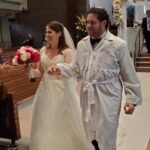This parasha details restrictions to which the priests were subject, and restrictions over which sacrifices could be brought. It then describes the commandments of Shabbat, the counting of the Omer, and all of the festivals of the year. The eternal flame and showbread of the Mishkan (Tabernacle) are described, and the parasha concludes with the laws of blasphemy.
Rabbi Steven Greenberg comments on the role of the priests and how the priestly duties have evolved in this day and age: “For Jews, the body is no mere container of the soul. We are, as is the Creator, invested in the creation. We have drunk in the words of Genesis, “and God saw all that God had made and behold it was very good” and remain intoxicated by the manifold power of the material world. According to the sages, man and woman provide the blood, bones and tissues and God contributes the spirit, the seeing of the eye, the hearing of the ear, consciousness and understanding. The whole of the body/soul is what we call, human. Creation is the ground of Jewish ethics and theology. From this creation-centered beginning, we have become not only a people of the book but a “people of the body”. We are asked to love life as much as does God. For such a people, the state of the body carries meaning. It matters not only what comes out of one’s mouth, but what goes in. Our bodies are meeting places between earth and heaven, literal Temples. As such, the body is a text of sorts. Its form, and consequently, its deformity as well, have meaning. This identification of body with meaning has a potentially threatening consequence. It shapes a particularly challenging picture of disability. This week’s Torah portion begins with list of the physical deformities and disabilities that would disqualify a priest from serving in the sanctuary. A priest with an extra or broken limb, a blind or lame, blind or deaf could not serve. Contact with death would temporarily disqualify a priest, but the loss of a finger would do so permanently. Scholars explain that the special tasks of the priest required perfection. The Temple and its sacrificial service was the conduit of connection between the upper and lower worlds. The priestly officiant needed to mediate between the perfect and eternal upper world and the broken and temporal lower world. To stand at that nexus was dangerous and so required a wholeness of both body and spirit.
After the destruction, the laws of the priesthood largely collapsed into irrelevance. However, there is one halakhic detail in which the bodily wholeness of the priest survives. In synagogues in Israel commonly and in the diaspora on holidays, kohanim bless the congregation. A person with blemished hands, and even blemished feet or facial appearance is disqualified. A priest whose hands have blemishes may not raise his hands [in the priestly blessing]. Even if his hands were discolored, as those engaged in work of dying textiles would have been, he may not bless the congregation. The mishna in tractate Megillah 4:7 explains the reason. People would gaze at him and one may not look at the priest in the midst of the blessing. Whether it was feared that such a gazing was dangerous (holiness can be lethal) or that the appearance of blemish could undermine trust in the blessing, the preoccupation is not primarily with the priest, but with the people who see him. The Tosefta expands the limitation beyond hands to the face and feet of the priest, the exposed areas of the body, but it also permits a priest who is well known to his community, whose blemishes had become familiar to them, to participate in the blessing. Once a community has become attuned to the blemished or disabled person, once the they are no longer troubled or frightened by a person’s difference, even the rarefied demand for priestly perfection disappears. The movement of any disability away from the fear and revulsion, the sense of loss and vulnerability it may generate is about just this, familiarity. Once we know the person, the gazing and gawking diminish and relationship grows. It is the work of all communities to make the different familiar in the service of compassion. Grounding ethics in the realness of the body is a challenging affair, in part because the body is not fair. Its abilities are not evenly distributed and its graces are randomly given to kind and cruel. It is the distinction of Jewish ethics to remain with the body in its varied and socially complex meanings and to push both toward compassion and toward wholeness.”
Prepared by Devorah Abenhaim






